- Home
- Leo Tolstoy
Childhood, Boyhood, Youth (Penguin ed.) Page 2
Childhood, Boyhood, Youth (Penguin ed.) Read online
Page 2
1893 Finishes The Kingdom of God Is within You, the summation of his religious and social ideas.
1894 Writes preface to collection of Maupassant stories. The Kingdom of God Is within You is published in Germany after its rejection by the Russian censors.
1895 The Power of Darkness is produced at the Maly Theatre, Moscow. Writes ‘Master and Man’ for publication that year by the Intermediary publishing house.
1896 Begins the short historical novel Hadji Murad, a work that would occupy him intermittently until 1904.
1897–8 What Is Art? is published in the magazine Questions of Art and Psychology. Successfully appeals to authorities to allow the emigration to Canada of the Dukhobors, a pacifist religious sect.
1898 Works for famine relief in the Tula province. Resolves to publish ‘Father Sergius’ and Resurrection to provide financial support for the Dukhobors’ emigration to Canada.
1899 Finishes Resurrection. It is published in instalments in the popular magazine The Grainfield, with illustrations by the distinguished artist Leonid Pasternak, Boris Pasternak’s father.
1900 After seeing a production of Anton Chekhov’s Uncle Vanya at the Moscow Art Theatre, begins work on the play The Living Corpse.
1901 Excommunicated by the Russian Orthodox church for ‘disseminating among the people teachings opposed to Christ and the Church’. Although not a strict excommunication in canonical terms, the decision nonetheless provokes widespread public outrage. Seriously ill with malaria, leaves Yasnaya Polyana for the southern shore of the Crimea, where his many visitors include Chekhov and Maxim Gorky.
1902 Returns to Yasnaya Polyana. Writes to Tsar Nicholas II about the evils of autocracy and the ownership of property.
1903 Begins his unfinished Memoirs at the request of his first biographer, Pavel Biryukov. Protests against Jewish pogrom in Kishinyov. Writes the story ‘After the Ball’.
1904 Bethink Yourselves!, his pamphlet opposing the Russo-Japanese war, is published in a translation by Chertkov in England. Death of his brother Sergey.
1905 Writes an afterword to Chekhov’s story ‘The Darling’. Produces a variety of public responses to the abortive 1905 Russian revolution, as well as the story ‘Alyoshka the Pot’ and the long tale ‘Posthumous Notes of the Elder Fyodor Kuzmich’.
1906 His article ‘Shakespeare and the Drama’ is published in the newspaper The Russian Word and appears as a separate publication the following year.
1908 ‘I Cannot Be Silent!’, an article denouncing capital punishment, is published illegally in Russia and then in translation in hundreds of newspapers abroad.
1909 Increased hostility between his wife and Chertkov and himself. Corresponds with Gandhi about the doctrine of non-violent resistance to evil.
1910 His wife threatens suicide. Final break in their relationship. On 10 November (28 October, Old Style), he departs Yasnaya Polyana. On 20 November (7 November, Old Style) he dies of pneumonia at the railway station in the town of Astapovo. At his request, he is buried in an unmarked grave at Yasnaya Polyana.
1911–12 The stories and tales ‘After the Ball’, ‘The Devil’, ‘The False Coupon’ and ‘Father Sergius’, and the short novel Hadji Murad are published posthumously by Chertkov.
Introduction
Count Leo Tolstoy was twenty-three and a cadet-volunteer serving with his oldest brother in an artillery brigade on Russia’s turbulent Caucasian frontier when in July 1852 he sent Childhood, his first completed work, to the leading St Petersburg literary monthly, The Contemporary.1 As he put it in a straightforward letter to the magazine’s distinguished editor, the poet Nikolay Nekrasov, ‘Look over the manuscript and if it is not fit for publication, return it to me. Otherwise, evaluate it, send me whatever you think it is worth, and publish it in your magazine … In essence, [it] is the first part of a novel, Four Periods of Growth, and the appearance of the following parts will depend on the success of the first.’2
Since Tolstoy had signed his letter and the manuscript with only the initials of his first name and patronymic, and given as a forwarding address his brother’s name and rank and the remote Cossack village in which their brigade was headquartered, Nekrasov’s reply was perhaps a little wary, although quick and very favourable. He supposed that the mysterious L. N. ‘had talent’, said that the work possessed ‘so much interest’ he would publish it and praised its ‘outlook’ and the ‘simplicity and reality of its content’.3 Childhood came out six weeks later in the monthly’s September issue, although, to Tolstoy’s dismay, in a heavily edited, even mutilated form, as he saw it, with ‘countless’ alterations and cuts and even a change in the title to The Story of My Childhood.4
Many of the alterations may have simply reflected the personal taste of Nekrasov and his staff, or at least their discomfort with the unknown author’s innovative style, while others were evidently the result of the state censor’s concern about sensitive religious and social matters, as in the substitution in the first paragraph of Chapter One of a portrait of the narrator’s mother for the fly-swatter-grazed icon, or the deletion of most of the first paragraph of Chapter Thirteen with its description of the youthful infatuation and cruel punishment of the serf Natalya Savishna, a passage that Tolstoy considered essential to an understanding of her character and condition and therefore to the story itself: it ‘portrayed to a certain extent the old way of life … and imparted humanity’ to her, as he wrote to Nekrasov upon seeing the September issue.5
Why the title was changed is less clear, however, although the nature of the change is suggestive. Perhaps in view of the growing popularity of autobiography and memoir, Nekrasov and his colleagues felt that their version lent greater familiarity and personal authority than Tolstoy’s own more abstract choice, or perhaps the sheer vitality of the narrative, its remarkable conviction and vivid, natural detail (for there had been nothing like it in Russian literature before) led them to conclude, as many have since, that it must be autobiographical, that a first-person account of such extraordinary particularity and rich interiority could only have come from direct personal recollection, especially considering that the author not only had no literary standing but, apparently, no literary experience at all.
However, as Tolstoy firmly objected in his post-publication letter, the change of title ‘contradicts the idea’ of the work, for ‘who cares about the story of my childhood?’ (his emphasis). The objection may not seem especially remarkable against the vast background of his writings as we regard them today, but for the young author seeking to defend the method of his first professional effort, it went to the very heart of the form and substance not only of Childhood but also, as it would turn out, of Boyhood and Youth – the next two parts in the series or trilogy, as it has come to be known, since the planned fourth part was never written.6 The objection stressed that Childhood was not, nor ever meant to be, a depiction of his own experience, as interesting as that might have been or as much as it was certainly utilized and adapted by him, but was offered instead as a work of deliberate art and invention. Indeed, it was a novel, as he said in his first letter to Nekrasov, and moreover one with an ‘idea’, an overarching conception, that entailed investigation not of a unique personality or sensibility – as Tolstoy’s youthful favourite Jean-Jacques Rousseau (1712–78) had famously claimed to undertake in his Confessions (1765–70), for example – but of the features and dynamics of a representative or even, in its trajectory and momentum, a universal human experience. Childhood was intended, that is, to examine in some broader, more significant way than the merely idiosyncratic the nature of a period or stage in the growth of the self; although, as Tolstoy would render it with his characteristic duality and empiricism, a growth regarded both subjectively from within the perceiving, recollecting, judging mind of the narrator, Nikolenka Irtenyev, and objectively in relation to a fully developed and absolutely authentic social and material world, whose parts and levels stand before us
in all their immediacy, thanks to the intensity of Tolstoy’s grasp of them and to his phenomenal powers of observation and precisely nuanced expression.
Despite what might have been expected from a first work, especially one with such an elaborate sense of time and place and of the psyche’s relation to them, Childhood is never tentative or unsure of itself in any of its descriptive, analytic or formal procedures, but creates at once, creates in its very first sentences and paragraphs, a convincing community of complex, rounded characters (even the minor ones have their own irreducible individuality and implied depth and paradox), whose inner life we have no trouble imagining, and whose world is represented, as I have already intimated, with an exactitude and clarity that are as fresh and compelling today as they were for the story’s initial readers more than a century and a half ago.
Although Nekrasov obviously could not have realized it at the time, he had been sent the first sustained work of a writer of enormous narrative gifts, ambition and formal and stylistic originality, and, no less importantly, of exceptional social and psychological insight, wit, imaginative sympathy and fierce moral seriousness – the first effort of someone who was destined to become one of the most potent creative forces not only of Russian but of world literature, and who, with his monumental War and Peace (1865–9) and Anna Karenina (1875–8), would produce two of the greatest works of fiction ever written.
The originality and unknown provenance of Childhood may have caught Nekrasov off guard, but if they did, it did not take him long to recover and recognize the brilliance of the author, whoever that might be.7 His admiration for the story measurably increased after he had reread it in proof and could, as he said, see it free of the clutter of the handwritten copy.8 His high opinion was quickly matched by that of the monthly’s readership of educated, thinking Russians and by the literary and intellectual vanguard of the day – the writers and critics who responded in letters and reviews. Their warm reception acknowledging the arrival of a new voice of immense promise was followed by an even warmer response to the trilogy’s second part, Boyhood, which was published in The Contemporary in September 1854, although again with changes and cuts by the censor; such as the omission of Chapter Six, concerning the adolescent Nikolenka’s first sexual stirrings, and Chapter Eighteen, depicting, in vernacular dialogue, the thwarted romance of the domestic serfs Masha and Vasily.9 As Nekrasov wrote to the elated young Tolstoy, ‘If I say that I cannot find expressions sufficient to praise your latest work, then I think it will be the truest that I can say … The talent of the author of Boyhood is unique and appealing to the highest degree, and things like the description of the summer highway and the thunderstorm or the confinement in the cell, and much, much more, will give this story a long life in our literature.’10
The publication of Youth, the trilogy’s last part, in The Contemporary a little more than two years later in January 1857 (once again with cuts by the censor, most notably the treatment at the end of Chapter Forty-four of the cynical army enlistment of Nikolenka’s talented university classmate Semyonov) was also met with praise; even if this time it was tempered with reservations reflecting both the changing ideological climate of the second half of the 1850s and the expectations (Tolstoy’s identity now having become widely known) created in his readers by the form and stance of his previous works, perhaps especially the powerful Sevastopol Sketches of 1855–6, with their unflinching depiction of the brutality and corruption of the Crimean War, which Tolstoy had witnessed as a front-line artillery officer (he received his commission in early 1854 and joined the defence of Sevastopol at his own request). Some readers objected to the relative diffuseness of Youth, which is almost as long as the first two parts of the trilogy combined and lacks – as does the period or stage it describes – their more dramatic or at any rate more clearly marked psychological shifts and transitions: the passing in Childhood from the rural estate’s bright Eden of intimate family life and closeness to nature to the darker, more ambiguous world of Moscow and, ultimately, the death of a parent; or the movement in Boyhood, at once amusing and touching, from the confusion and disorder of early adolescence to the partly redeeming social and moral transformation that, through the agency of a new friendship, eventually takes their place.
Other readers were disappointed by the story’s aloofness from the urgent social issues and ideological controversies that were assuming an ever more prominent place in Russian literature and intellectual life – the crippling blight of serfdom, for example, or the true nature of Russian culture and the proper direction (native or Western) of its future development.11 Still other readers were discontented with what they saw as the story’s compositional and stylistic defects, its unabashed mixing of reflection, analysis and narrative, or its apparent indifference to lexical and syntactical decorum, as Tolstoy pushed against conventional form and language in his unrelenting search for cognitive accuracy and truth.12
Yet despite those reservations (or simply misunderstandings) in its readership, Youth’s subtle evocations of character (the psychological complication and pathos of the image of the stepmother, Dunya, in Chapter Forty-two, for example), its lighter moments of satire, parodic pastiche and comedy (Tolstoy’s humour is greatly underappreciated), its glancing yet always experientially grounded consideration of such philosophical matters as the varieties of filial love (Chapter Twenty-four) or the nature and discipline of art (Chapter Thirty), and its scrupulously detailed – nothing is ever vague, everything is firmly, uniquely itself – yet surpassingly lyrical descriptions of nature (the progress in Chapter Thirty-two, for example, from deliberate immersion in the lush physicality of the natural world to – in both the implicit structure of its imagery and its explicit theology – a kind of Platonic contemplation of the divinity residing within and beyond it) – all those elements, and many more besides, helped to secure Tolstoy’s place in the front rank of Russian prose, and gave further impetus to its movement along the high Realist path that would in the next two decades lead to its golden age.
Of course, with our knowledge of Tolstoy’s life, we do not really have to rely on his letters to his first editor, Nekrasov, nor indeed on any of his other correspondence or the many remarks in his notebooks and diaries that might also be cited, to draw confident conclusions about the trilogy’s genre – about its mode of literary cognition. We have only to compare the facts and events of Tolstoy’s own biography with the relationships and circumstances he assigned to his narrator.
Tolstoy’s mother died when he was two and he had no direct memory of her. Nikolenka’s mother dies when he is eleven and his sense of her is both intensely physical and a fulcrum of the formal and thematic structure of Childhood, if not of the rest of the trilogy. Tolstoy’s father died (or was killed) when he was nine, leaving him and his siblings in the care first of their paternal grandmother in Moscow, and then, after her death, of paternal aunts in Moscow and the provincial capital city of Kazan on the upper Volga. Nikolenka’s father is a changing, somewhat ambiguous, yet important presence throughout the trilogy, ensuring, however precariously, the financial security of the family and standing, for better or worse, as a main source of its social, psychological and ethical inheritance and character.
Tolstoy was a count (graf) with distinguished ancestors on both sides. Nikolenka comes from a somewhat more modest background, although he, too, is a member of the urban nobility and not only blessed with the superb educational and material advantages provided by that milieu, but also, as he grows older, burdened with its characteristic pretensions and moral confusion, as epitomized in the trilogy, but especially in Youth, by the notion of comme il faut or ‘respectability’. Tolstoy had three older brothers and a younger sister with whom he remained close. Nikolenka has a brother and a sister whom he loves and admires (or, as the youngest, sometimes envies and resents), but there is a certain distance in his relations with them, even though they figure prominently in his evolving sense of himself and his place
in the world.
Tolstoy attended the University of Kazan, first in the Department of Arabo-Turkic Languages (he was a gifted linguist, with excellent command as a youth of French and German and a good knowledge of English) and then of Jurisprudence, before abandoning his studies to devote himself, until he joined his brother’s brigade in the Caucasus, to the enlightened management of Yasnaya Polyana, the estate 125 miles south of Moscow that he had inherited with its numerous serfs. Nikolenka is admitted to Moscow University in the Department of Mathematics, although, like Tolstoy’s own first year in Kazan, his Moscow studies end in failure, and, of course, his story, too, moves back and forth between the city and the country (a perennial Tolstoyan motif), with the idyllic world of the latter – of Petrovskoye in the trilogy – playing a central, even transcendental role for him, just as nature did for Tolstoy and many others in the post-romantic Russia and West of his day.
One could continue with such contrasts and oblique similarities in regard to Tolstoy and the members of his large family, including its various retainers and servants, but the point is clear enough. The story of Nikolenka Irtenyev told in the trilogy is a brilliantly sustained imaginative construct, a social and psychological mediation derived, to be sure, from biographical experience as perhaps most works of fiction ultimately are, but not to be confused with that experience or with its merely private meaning. Indeed, to make such a confusion, as some biographers and critics have done, is to overlook or diminish the artistic skill with which the trilogy has been made and to blur the outlines of Tolstoy’s own life and its historical reality.13
If the trilogy is indeed a novel, just as Tolstoy said it was, and not a veiled account of his own private experience with embellishments, then what kind of novel is it? The broad answer is that it is a Bildungsroman, a subgenre that includes such classic antecedents as Rousseau’s Émile (1762) and Charles Dickens’s David Copperfield (1849–50), and whose subject, by definition, is the growth and formation of the hero, although in the trilogy the emphasis falls on the turbid, lurching process of that formation, the tangle of feeling, insight and striving self-awareness and realization that inform and impel it.14

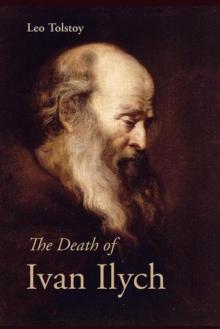 The Death of Ivan Ilych
The Death of Ivan Ilych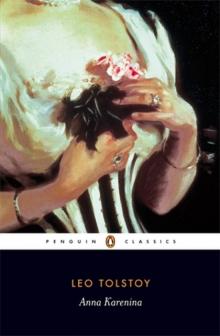 Anna Karenina
Anna Karenina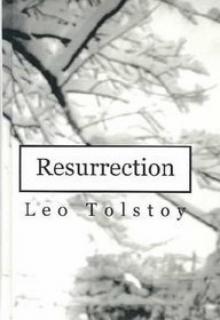 Resurrection
Resurrection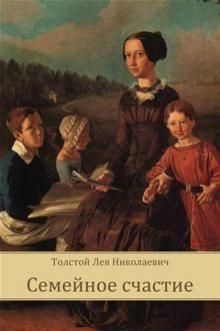 Family Happiness
Family Happiness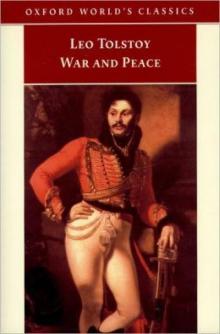 War and Peace
War and Peace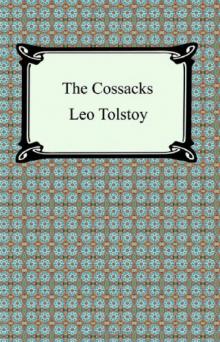 The Cossacks
The Cossacks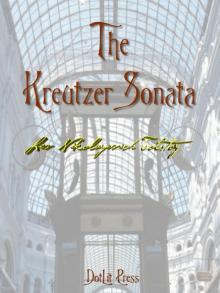 The Kreutzer Sonata
The Kreutzer Sonata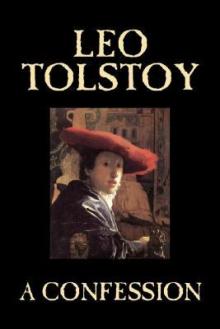 A Confession
A Confession The Kingdom of God Is Within You
The Kingdom of God Is Within You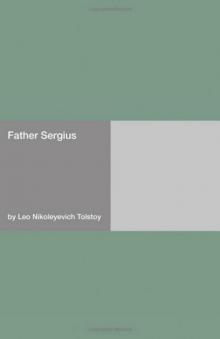 Father Sergius
Father Sergius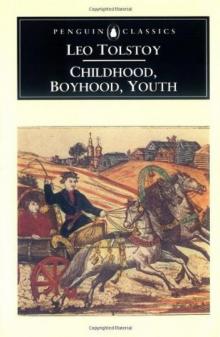 Childhood, Boyhood, Youth
Childhood, Boyhood, Youth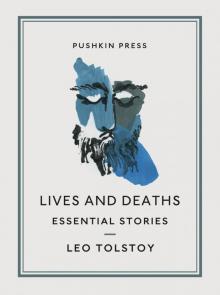 Lives and Deaths
Lives and Deaths The Devil
The Devil The Death of Ivan Ilyich and Master and Man
The Death of Ivan Ilyich and Master and Man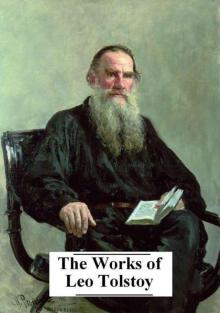 The Complete Works of Leo Tolstoy (25+ Works with active table of contents)
The Complete Works of Leo Tolstoy (25+ Works with active table of contents)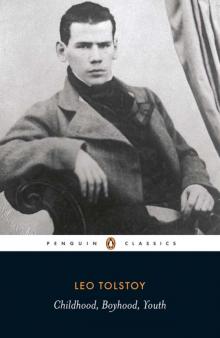 Childhood, Boyhood, Youth (Penguin ed.)
Childhood, Boyhood, Youth (Penguin ed.) The Power of Darkness
The Power of Darkness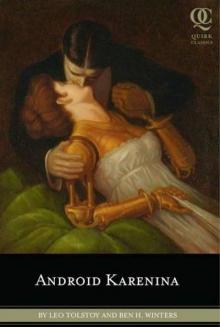 Android Karenina
Android Karenina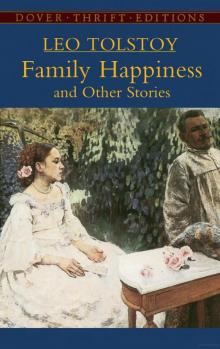 Family Happiness and Other Stories
Family Happiness and Other Stories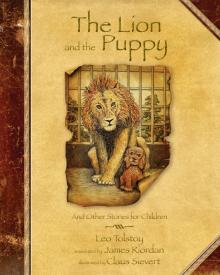 The Lion and the Puppy
The Lion and the Puppy Collected Shorter Fiction, Volume 2
Collected Shorter Fiction, Volume 2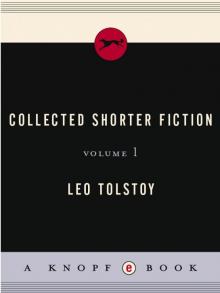 Collected Shorter Fiction, Volume 1
Collected Shorter Fiction, Volume 1